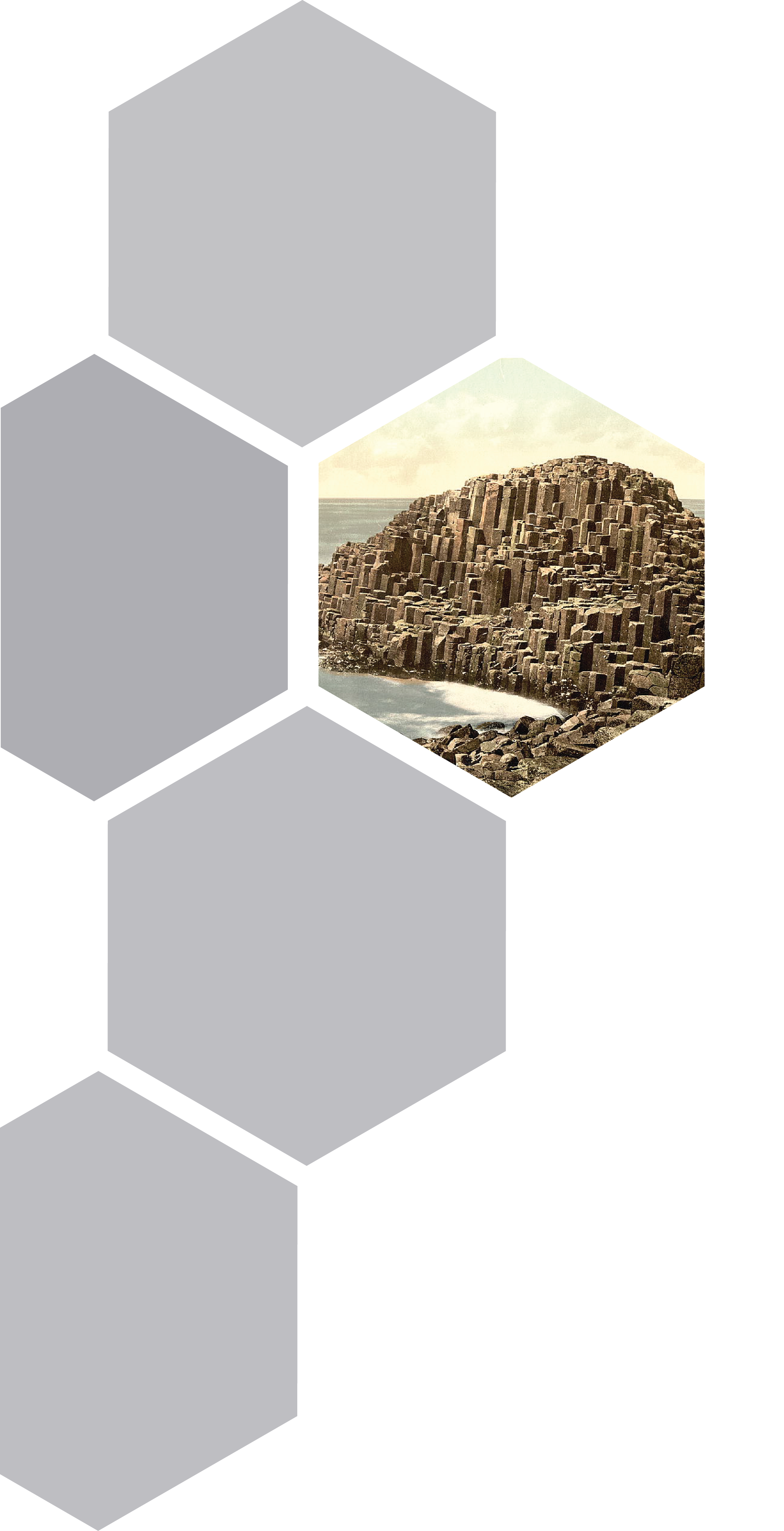CREATION
GEOLOGY
Around 50 to 60 million years ago, during the Paleogene Period, Antrim was subject to intense volcanic activity, when highly fluid molten basalt intruded through chalk beds to form an extensive lava plateau. As the lava cooled, contraction occurred. Horizontal contraction fractured in a similar way to drying mud, with the cracks propagating down as the mass cooled, leaving pillarlike structures, which are also fractured horizontally into "biscuits". In many cases the horizontal fracture has resulted in a bottom face that is convex while the upper face of the lower segment is concave, producing what are called "ball and socket" joints. The size of the columns is primarily determined by the speed at which lava from a volcanic eruption cools. The extensive fracture network produced the distinctive columns seen today. The basalts were originally part of a great volcanic plateau called the Thulean Plateau which formed during the Paleogene.
MYTHOLOGY
According to legend, the columns are the remains of a causeway built by a giant. The Causeway story tells us that Finn lived happily on the Antrim coast with his wife Oonagh until he discovered he had a rival in Scotland known as Benandonner. Finn was frequently taunted by Benandonner from afar and on one occasion Finn scooped up a clod of earth and hurled it across the sea at him but missed. The huge clod of earth landed in the middle of the Irish Sea making the Isle of Man and the depression formed from scooping up the earth filled up with water to become Lough Neagh.
Finn finally challenged Benandonner to a proper fight and decided to build a causeway of enormous stepping stones across the sea to Scotland, so that he could walk across without getting his feet wet. But as he approached and caught sight of the great bulk of Benandonner, Finn became afraid and fled back home, with Benandonner hot on his trail. In his haste as he ran, Finn lost one of his great boots and today it can be seen sitting on the foreshore in Port Noffer where it fell to the ground.
The story takes a humorous twist when Finn asks his wife Oonagh to help him hide. Clever Oonagh disguised Finn as a baby and pushed him into a huge cradle, so when Benandonner saw the size of the sleeping child, he assumed the father must be GIGANTIC. Benandonner fled home in terror, ripping up the Causeway as he went in case he was followed.
The story concludes that this is the reason that the Giants Causeway exists in north Antrim, with similar columns at Fingals Cave on the Scottish island of Staffa.Fionn's wife, Oonagh, disguises Fionn as a baby and tucks him in a cradle. When Benandonner sees the size of the 'baby', he reckons that its father, Fionn, must be a giant among giants. He flees back to Scotland in fright, destroying the causeway behind him so that Fionn could not follow.Across the sea, there are identical basalt columns (a part of the same ancient lava flow) at Fingal's Cave on the Scottish isle of Staffa, and it is possible that the story was influenced by this.
In overall Irish mythology, Fionn mac Cumhaill is not a giant but a hero with supernatural abilities. In Fairy and Folk Tales of the Irish Peasantry (1888) it is noted that, over time, "the pagan gods of Ireland grew smaller and smaller in the popular imagination, until they turned into the fairies; the pagan heroes grew bigger and bigger, until they turned into the giants". There are no surviving pre-Christian stories about the Giant's Causeway, but it may have originally been associated with the Fomorians (Fomhoraigh) the Irish name Clochan na bhFomhoraigh or Clochan na bhFomhorach means "stepping stones of the Fomhoraigh". The Fomhoraigh are a race of supernatural beings in Irish mythology who were sometimes described as giants and who may have originally been part of a pre-Christian pantheon.


